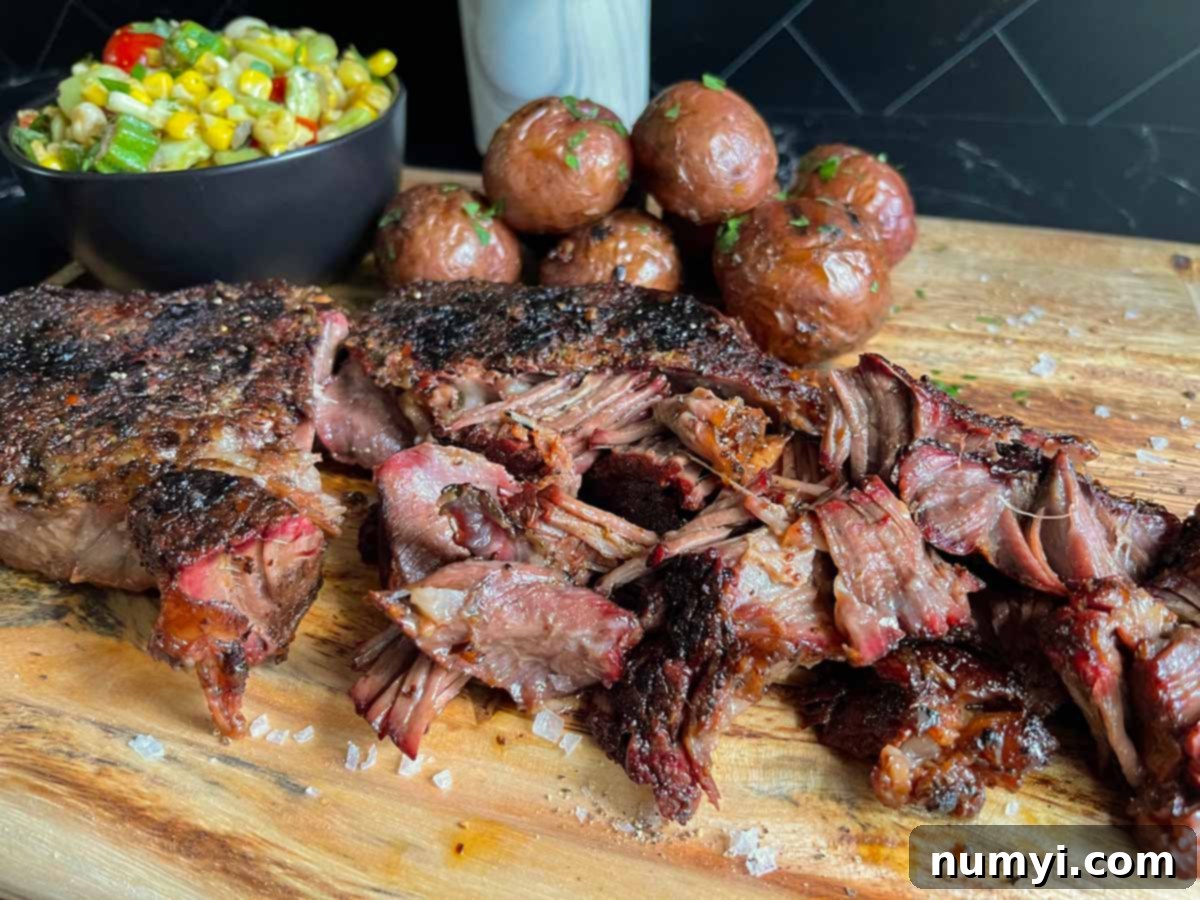The Ultimate Smoked Chuck Roast Recipe: Fall-Apart Tender Perfection
Smoked chuck roast stands out as a fantastic and often preferred alternative to brisket. With its significantly quicker cook time, more affordable price point, and truly incredible flavor, you simply can’t go wrong when you decide to toss this beautiful cut of beef onto your smoker. It’s perfect for weekend gatherings or simply enjoying a tender, smoky meal without the all-day commitment of traditional BBQ.
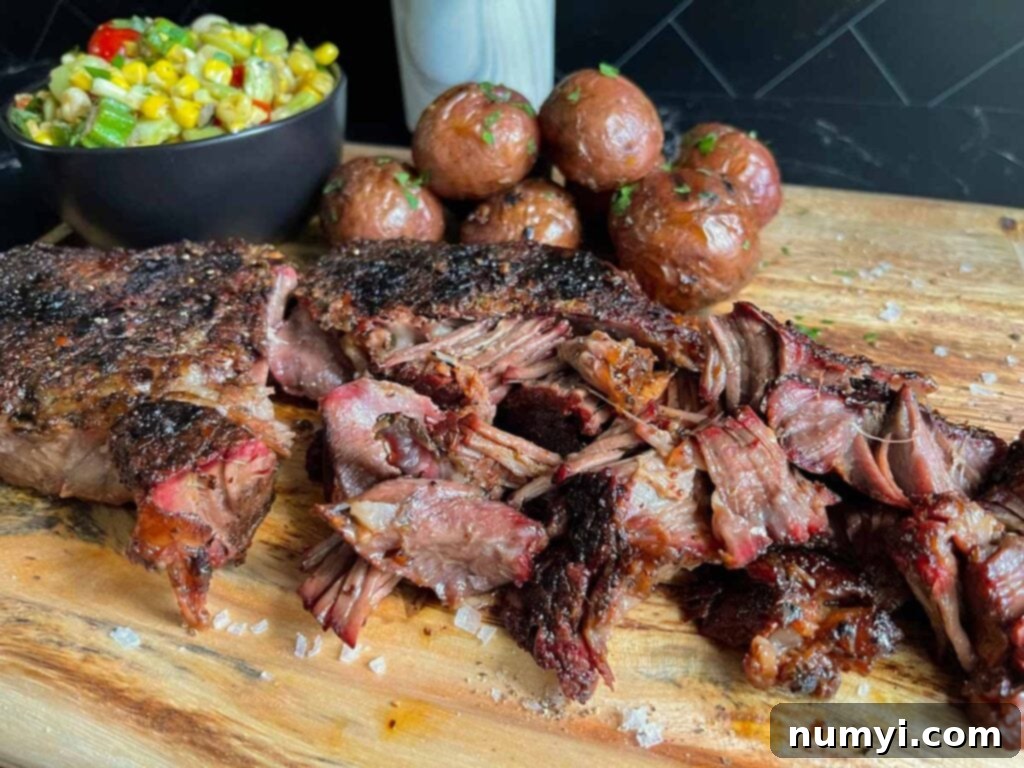
Why You Will Love This Smoked Chuck Roast Recipe
If you’re searching for an intensely flavorful, melt-in-your-mouth smoked beef experience, this recipe is second to none. The chuck roast emerges from the smoker fall-apart tender, imbued with deep smoky notes, and remarkably moist. The rich marbling within the chuck roast, combined with the slow smoking process, renders the fat beautifully, creating an unctuous and satisfying texture that rivals even the most perfectly cooked brisket.
For those who appreciate authentic barbecue but don’t have 12-14 hours to dedicate to a cook, this smoked chuck roast is a game-changer. It delivers outstanding results in approximately 6-7 hours, making it much more accessible for a casual weekend cookout or even a weekday dinner if you plan ahead. Imagine starting your smoker in the morning and having perfectly tender, flavorful beef ready for an early afternoon meal or a late lunch. No more setting alarms at 4 AM to start a massive brisket!
Furthermore, if you’ve been looking for a cost-effective alternative to brisket, look no further. Chuck roast offers a similar beefy flavor and tenderness profile when properly smoked, but at a fraction of the price. You get that same super moist, super delicious smoked beef without breaking the bank, proving that exceptional barbecue doesn’t always have to come with a hefty price tag or an all-night commitment.
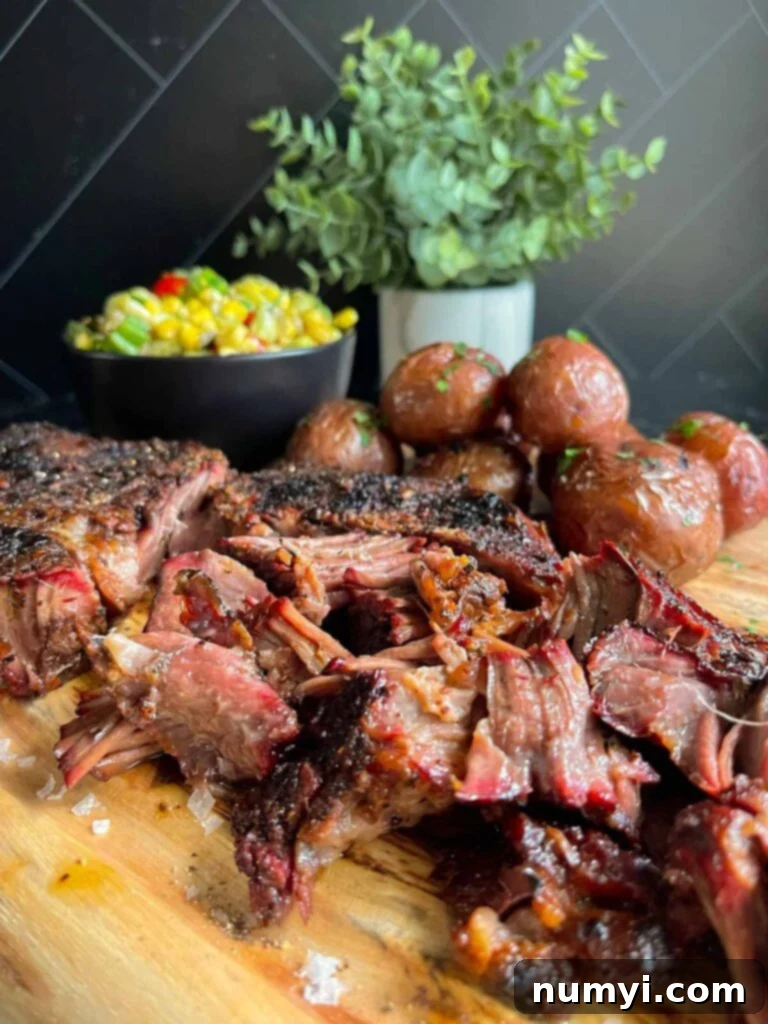
This recipe is incredibly versatile and works seamlessly with any type of smoker you might have, be it a pellet smoker, offset smoker, or even a simple Weber charcoal grill set up for indirect heat. While I personally enjoy using my Masterbuilt smoker for its consistent temperature control and ease of use, the fundamental techniques shared here apply universally, ensuring success regardless of your equipment. It’s truly a flexible recipe designed for maximum flavor with minimal fuss.
To complete your backyard barbecue feast, consider serving this magnificent smoked chuck roast with some delightful rosemary garlic grilled baby potatoes and a refreshing fresh summer succotash. For a classic BBQ pairing, these rich and savory bbq baked beans are an absolute must-try. Together, these sides create a symphony of flavors that perfectly complement the smoky beef, turning any meal into a memorable culinary event!
Chuck Pot Roast Versus Chuck Tender: Understanding the Difference
When selecting your cut of beef, you might encounter both “chuck pot roast” and “chuck tender” at the grocery store. While both come from the chuck primal, they are distinctly different and yield different results when smoked. We’ve experimented with smoking a chuck tender, and while it was indeed very tender, it tended to be noticeably drier than a chuck roast.
The key difference lies in the fat content and muscle structure. Chuck tender is a very lean cut, with minimal marbling and connective tissue compared to a traditional chuck roast. This lack of intramuscular fat means there isn’t much to render down during the long smoking process, which is essential for keeping the meat moist and succulent. While the chuck tender offers a rich beefy flavor and a pleasant tenderness, its lean nature often results in a less juicy outcome for slow-smoked applications.
Conversely, the chuck roast, often labeled as a “chuck eye roast” or “blade roast,” boasts a good amount of marbling and connective tissue (collagen). This collagen slowly breaks down into gelatin during the low-and-slow smoking process, infusing the meat with moisture and creating that characteristic fall-apart, pullable texture. The chuck tender, being leaner, lends itself better to being sliced rather than pulled apart, making it more suitable for dishes where you want distinct slices of beef.
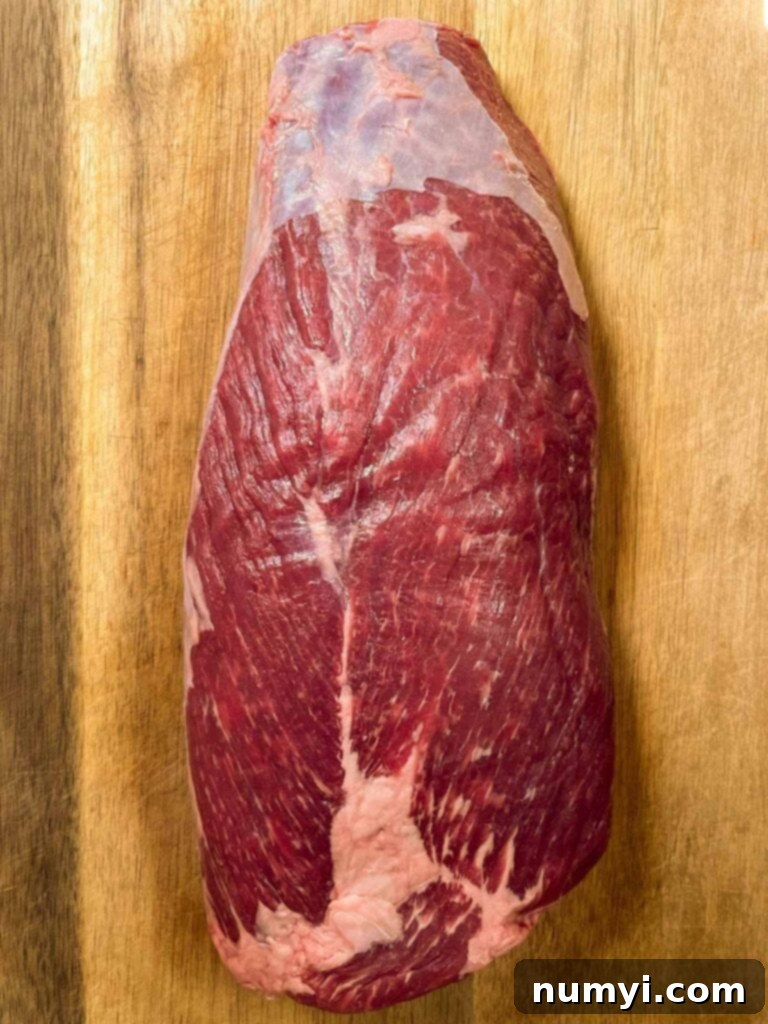
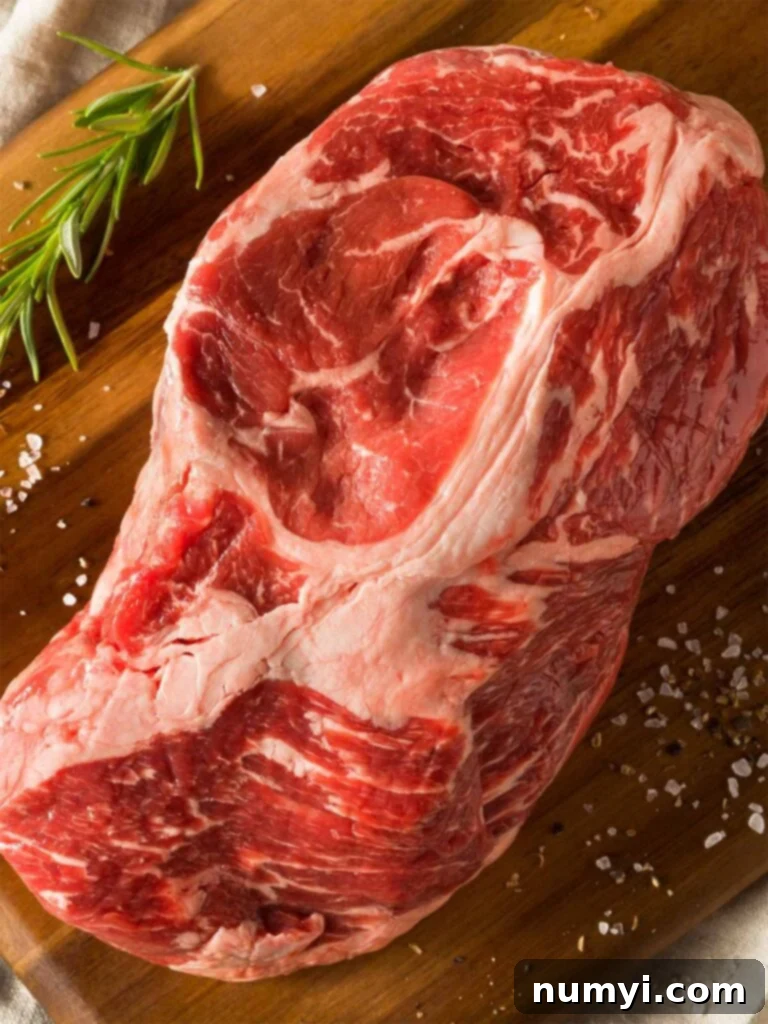
Don’t Sweat The Recipe is supported by its readers. We may earn a commission if you purchase through a link on our site. Learn more.
Although I did make some incredibly delicious sliced meat sandwiches with the smoked chuck tender, I found myself relying on the retained jus from the cook to pour over the meat, thereby adding some much-needed moisture. My recommendation for chuck tender is to cook it to a medium-rare temperature and then slice it thinly. While smoking a chuck tender is certainly viable and can be quite good, for that ultimate tender, pulled-beef experience, I would unequivocally choose a chuck roast over a chuck tender every time.
Essential Ingredients for Your Smoked Beef Chuck Roast
One of the beauties of this recipe is its simplicity in terms of ingredients. You don’t need a long list of fancy items to achieve spectacular results. All you truly need is a quality chuck roast and your favorite dry rub. The magic happens primarily through the low-and-slow smoking process, allowing the natural beefy flavor to shine through, enhanced by the smoke and seasonings.
Having prepared this dish numerous times, I’ve found that a Texas-style rub works exceptionally well with beef. This typically means a generous coating of coarse salt and coarse black pepper, which are truly all that’s needed to create a perfect bark and enhance the rich beef flavor. For those who prefer a ready-made option or are just starting out, Montreal steak seasoning is an excellent go-to choice. It offers a balanced blend of coarse salt, pepper, garlic, onion, and other spices that complement beef beautifully.
While I enjoy crafting my own custom rubs for various meats, Montreal seasoning offers a convenient and effective solution that doesn’t require reinventing the wheel. Its robust flavor profile penetrates the meat during the rest and smoking process, contributing to a fantastic crust (bark) and a flavorful interior.
- 3 lbs Chuck Roast (ideally with good marbling)
- 2 tablespoons Montreal Steak Seasoning (or your preferred beef rub)
- 1 tablespoon Worcestershire sauce – for the rub binder (optional, but recommended)
It’s that simple, right? And why stop at one when you can easily prepare two? (Always consider leftovers!) Just plan on needing approximately 2 tablespoons of rub for each 3-pound chuck roast to ensure full coverage and maximum flavor. Don’t be shy with the seasoning!
Preparing Your Chuck Roast for the Smoker
Proper preparation is key to a successful smoked chuck roast. While simple, these steps ensure your roast absorbs maximum flavor and achieves that desired tender, juicy texture.
Applying the Binder and Rub
I always prefer to use a binder when applying the rub. While optional, it helps the seasoning adhere evenly to the meat, creating a more consistent and flavorful bark. A small amount of Worcestershire sauce works perfectly for this purpose. Evenly coat the chuck roast with about 1 tablespoon of Worcestershire sauce, ensuring all surfaces are lightly covered.

Next, apply your chosen rub generously to all sides of the roast. Don’t forget to get the edges! A good, even coating is crucial for developing a flavorful bark. Once seasoned, allow the chuck roast to rest at room temperature for at least 1 hour before placing it on the smoker. This resting period allows the rub to meld with the meat and creates a dry brine effect, drawing moisture out and then reabsorbing it, which contributes to a juicier final product.
For even deeper flavor infusion, you can apply the rub several hours in advance, or even overnight, storing the seasoned roast in the refrigerator. If you choose this method, be sure to remove the chuck roast from the refrigerator at least 1 hour before you plan to smoke it. This helps the meat come up slightly in temperature, promoting a more even cook and better smoke absorption.
Smoking a Chuck Roast: Step-by-Step Guide
Whether you’re using a Masterbuilt gravity-fed smoker, a classic offset, a convenient pellet grill, or even a kettle grill with an indirect setup, the principles for smoking a chuck roast remain the same. Consistency in temperature and good smoke are your allies.
Setting Up Your Smoker and Wood Selection
Begin by preheating your smoker to a stable 250 degrees Fahrenheit (approximately 120 degrees Celsius). Temperature stability is paramount for consistent results. Now, let’s talk wood. Your choice of wood impacts the final flavor significantly. For beef, I highly recommend robust woods that impart a strong smoke flavor. For this particular cook, I enjoy a mixture of hickory and cherry wood. Hickory offers an assertive, classic BBQ smoke profile that pairs wonderfully with beef, while cherry adds a subtle sweetness and a beautiful mahogany color to the bark.
Other excellent wood options for smoking beef include pecan (milder than hickory, nutty), post oak (a classic for Texas barbecue, clean and strong), and even mesquite (very strong, best used sparingly or blended). If you’re unsure where to start, hickory, pecan, or oak are always safe and delicious choices for beef.
On my Masterbuilt 1050, I layer charcoal in the hopper, then add chunks of hickory and cherry wood, followed by more charcoal. To further enhance the smoke, I also add additional wood chips directly into the ash bin, ensuring a consistent and flavorful smoke output throughout the cook. This method maximizes smoke penetration, leading to a richer flavor.
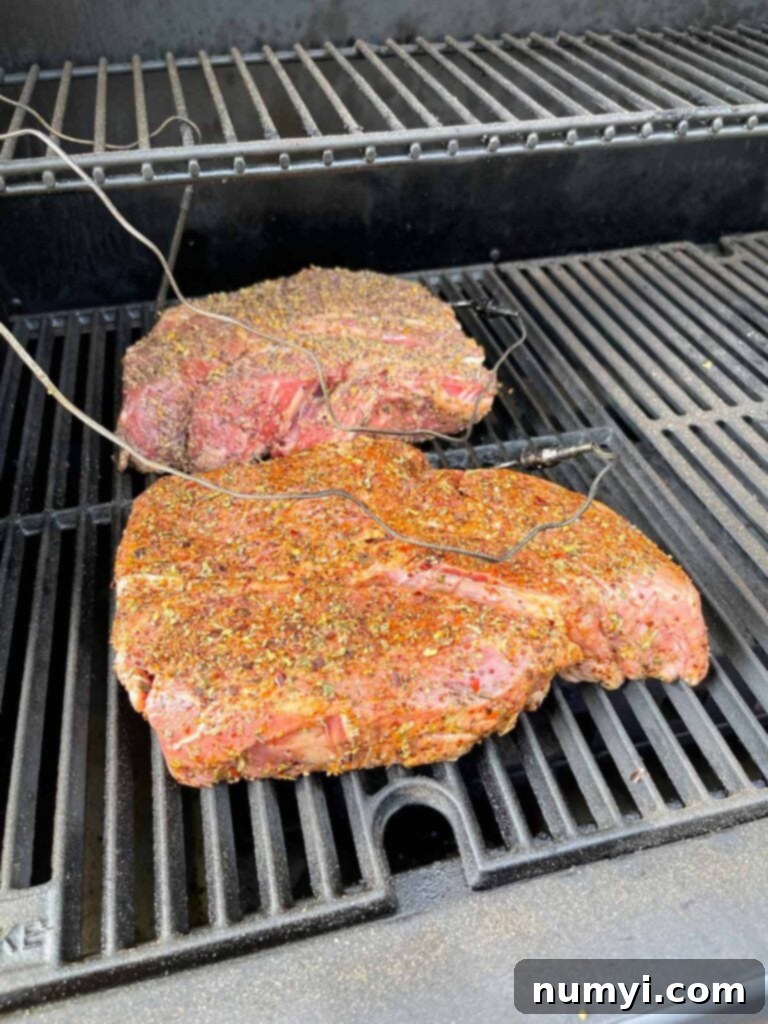
The Initial Smoke and Monitoring Temperature
Once your smoker reaches the target temperature of 250°F, carefully place the seasoned chuck roast(s) directly onto the grill grates. If you have a meat thermometer with probes, insert them into the thickest part of the roast, avoiding bone. Close the smoker lid, and let the smoke work its magic.
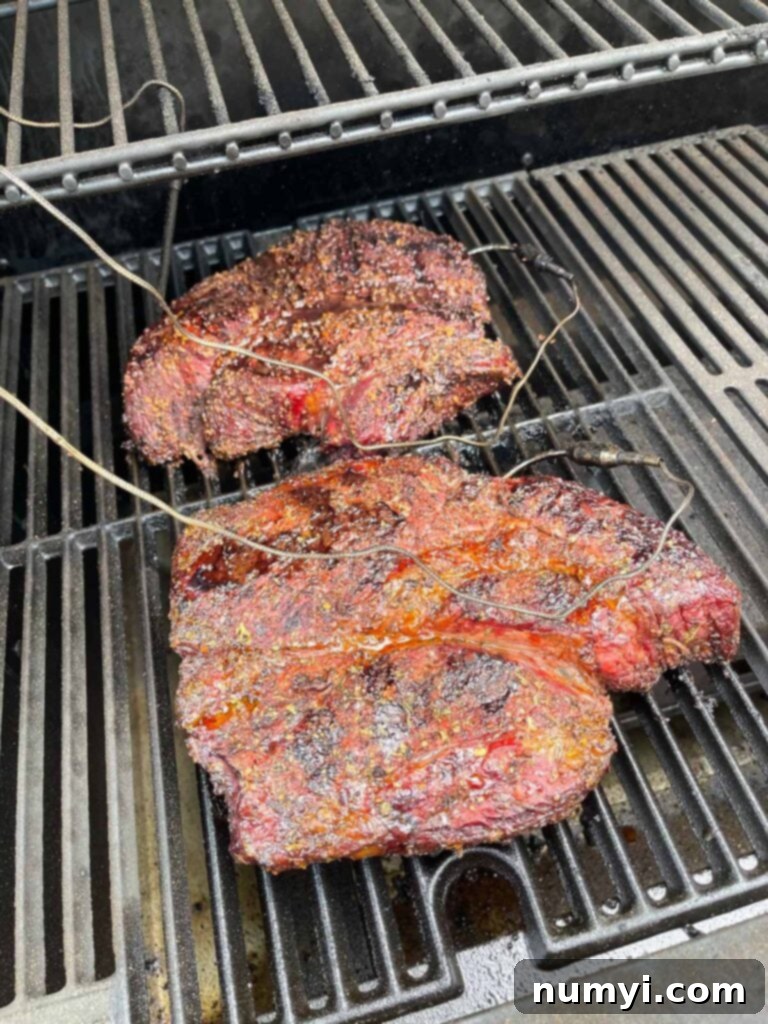
Smoke the chuck roast until its internal temperature reaches between 155 to 160 degrees Fahrenheit. This initial phase typically takes approximately 3 hours, but remember to always cook to temperature, not strictly by time, as every cut of meat and smoker performs differently. This is when the chuck roast develops its beautiful smoky bark and a distinct smoke ring.
If you don’t have built-in probes to monitor the temperature continuously, a reliable instant-read thermometer is an absolute must-have. Check the internal temperature periodically to ensure you hit your targets. It’s a true game-changer for precise BBQ cooking!
The Wrap and Finishing the Cook
Once the chuck roast hits 155-160°F, remove it from the smoker. This is the “wrap” stage, crucial for pushing through the stall and tenderizing the meat. Place the roast onto a couple of large pieces of heavy-duty aluminum foil. Add a few tablespoons of butter over the top – this adds richness and moisture. Tightly wrap the roast, creating a sealed packet.
Alternatively, you can use butcher paper instead of aluminum foil. Butcher paper allows for more breathability, which can help preserve the crispness of the bark, though it may extend the cooking time slightly, especially if the meat hits “the stall.” The stall is a common phenomenon in BBQ where the internal temperature of the meat plateaus for an extended period, usually between 150-170°F, due to evaporative cooling. Wrapping helps overcome this by trapping moisture and heat.
If you’re so inclined, you can also spritz the roast with a 50/50 mix of apple cider vinegar and water before wrapping. While some swear by it, with a well-marbled chuck roast, I’ve honestly found that the difference in moisture and flavor is often negligible, so feel free to skip this step if you prefer.
Return the wrapped chuck roast(s) to the smoker and continue cooking at 250°F until the internal temperature reaches approximately 205°F. This final phase usually takes another 2-3 hours. At this temperature, the collagen in the chuck roast has fully broken down into gelatin, resulting in that desired fork-tender texture.
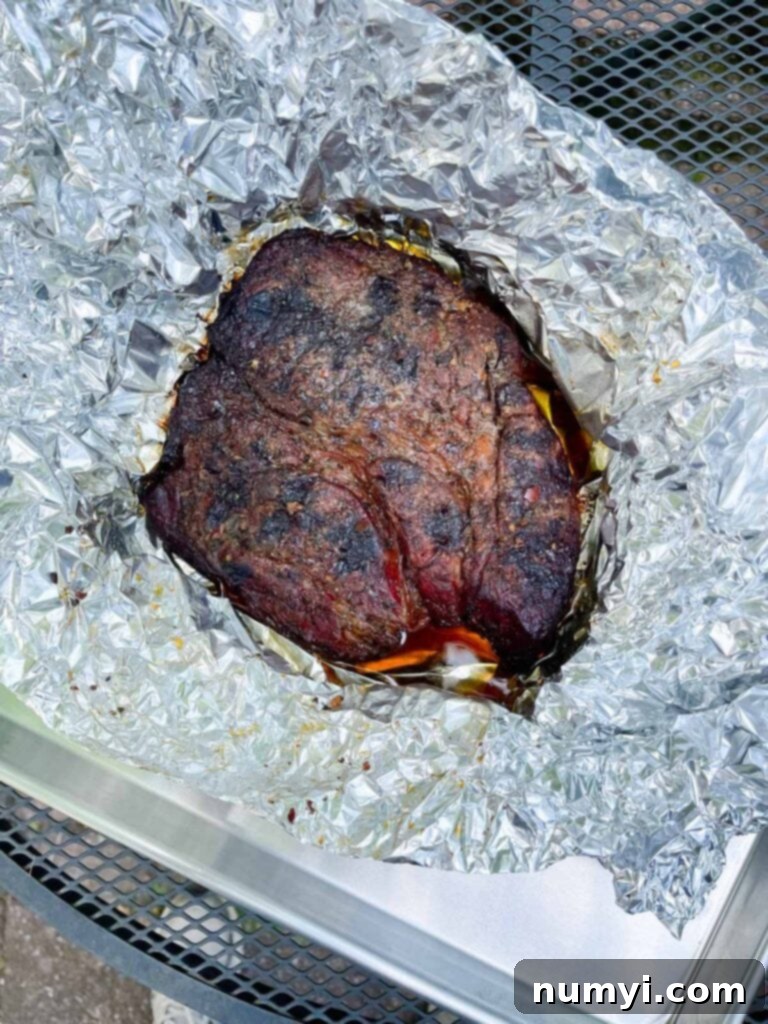
Resting for Perfection
Once your chuck roast reaches 205°F, remove it from the smoker. The most crucial step now is to allow it to rest. Leave the roast wrapped and let it sit for at least an hour, or even up to ninety minutes. This resting period is vital: it allows the muscle fibers to relax and reabsorb the juices that have been pushed to the center during cooking, ensuring a remarkably moist and tender final product. Skipping the rest can result in a drier, tougher roast.
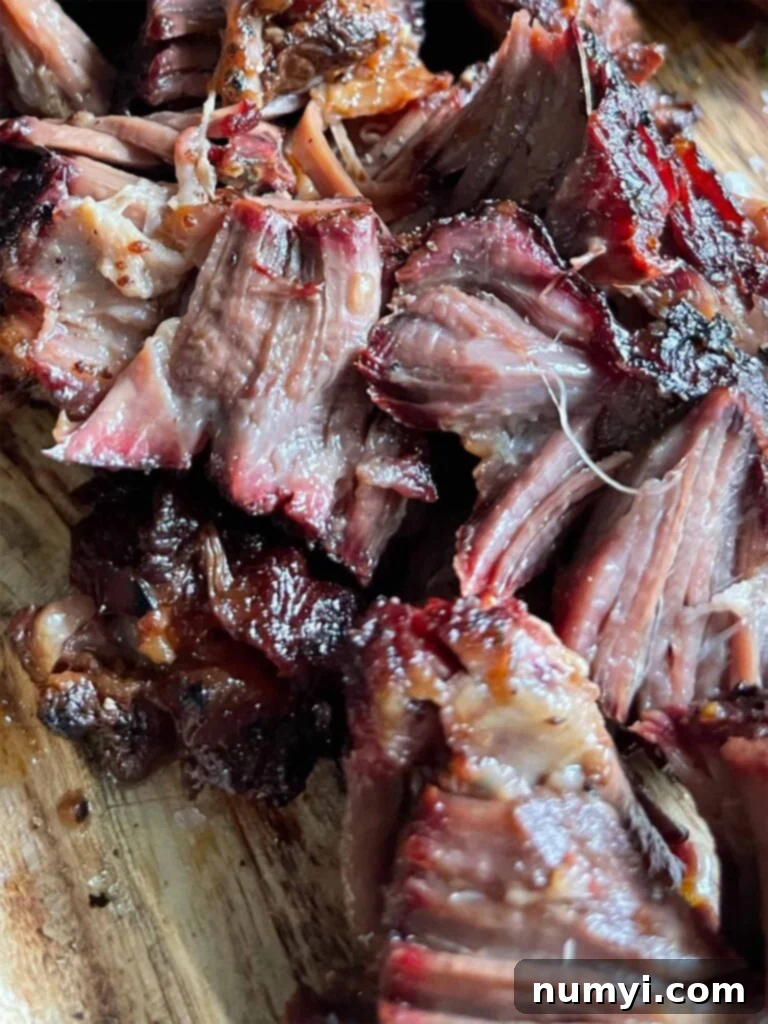
After resting, unwrap the magnificent smoked chuck roast. Using your hands or a pair of sturdy serving forks, gently break apart the meat into your desired size of flavorful morsels. The meat should pull apart effortlessly, a testament to a perfectly smoked and tender chuck roast. Serve it hot with your favorite BBQ sides and prepare for an incredible meal!
Conclusion: Experience Unforgettable Smoked Beef
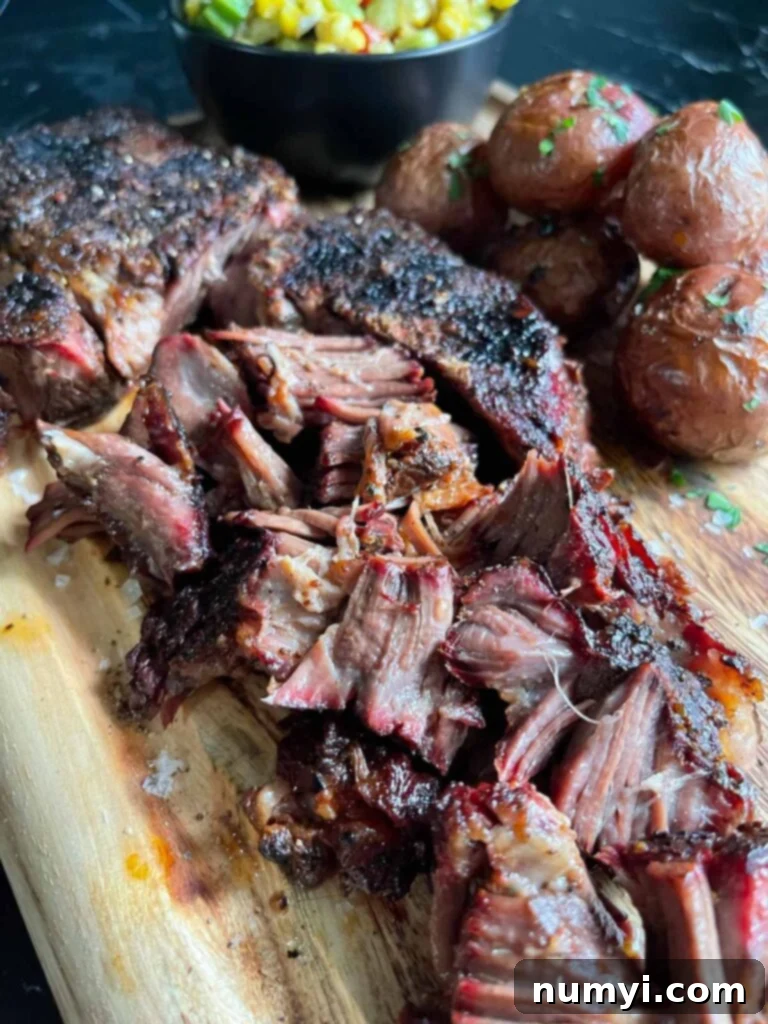
Honestly, this smoked chuck roast recipe is about as easy as it gets for delivering truly exceptional barbecue. It will delight you, your family, and any house guests to no end. The results are consistently delicious, making it a reliable crowd-pleaser for any occasion.
Each bite of this beef is super moist, bursting with rich beefy flavor enhanced by the deep smokiness. The rub, particularly a good Montreal steak seasoning or a simple salt and pepper blend, creates a fantastic bark that complements the tender interior perfectly. It’s truly incredible how all these elements come together to create a harmonious and satisfying culinary experience.
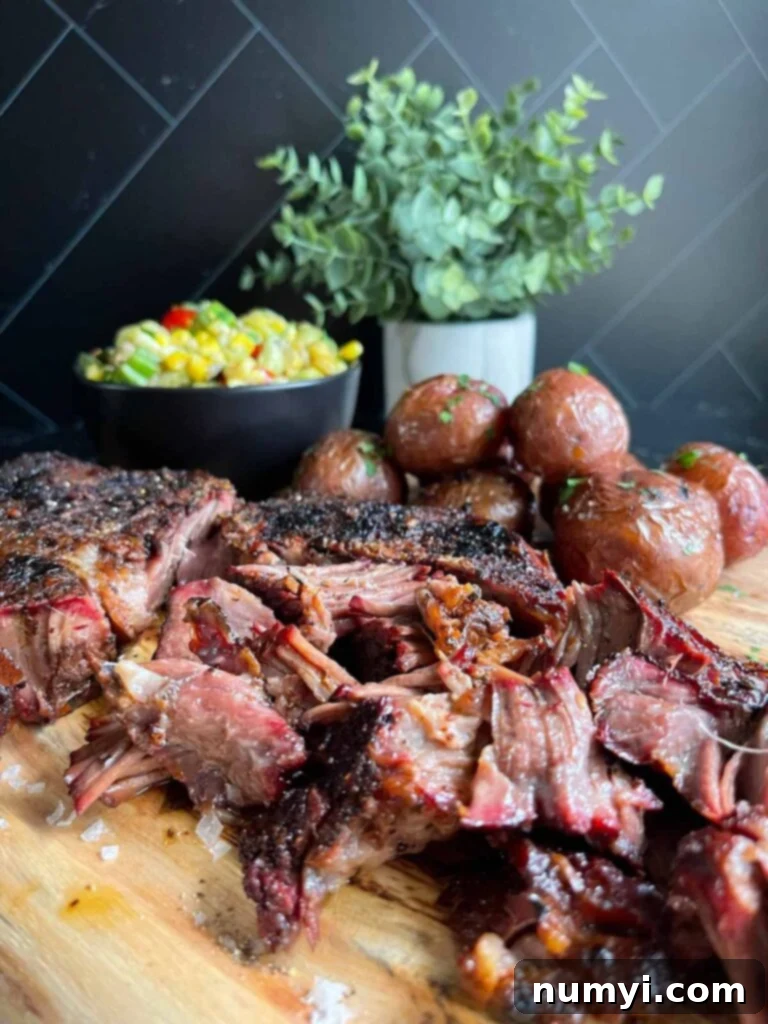
Hands down, you will be overjoyed with the results when you try this recipe. The tender texture, the pronounced smoke ring, and the flavorful bark make it a standout dish. And I haven’t even gone into detail about the amazing versatility of the leftovers!
Making the Most of Leftovers
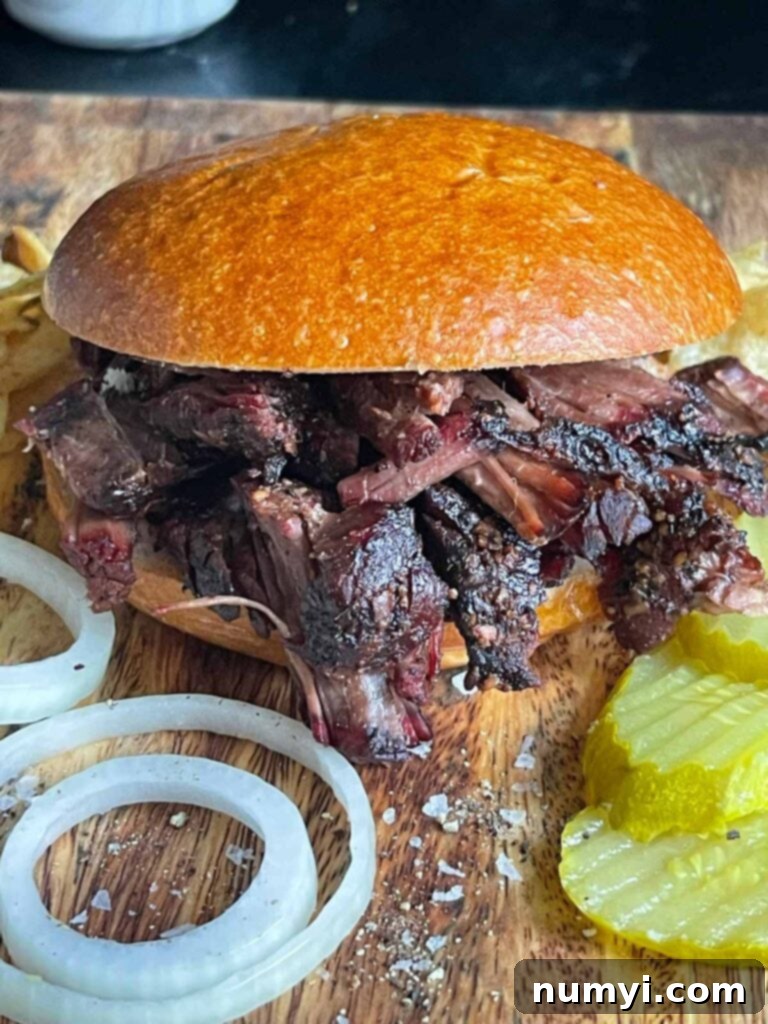
First things first: classic pulled beef sandwiches. Pile the tender smoked chuck roast high on a bun with some fresh sliced onion and tangy pickles. It’s an absolute triumph, so good you might even skip the BBQ sauce!
The next day, get creative! I often take some of those leftover grilled potatoes, dice them up, and combine them with shredded smoked chuck roast to create a truly delicious breakfast hash, topped with a fried egg. Later that night, the last of the meat transforms into a generous plate of smoked chuck roast nachos, loaded with cheese, jalapeños, and all your favorite toppings. The possibilities are endless!
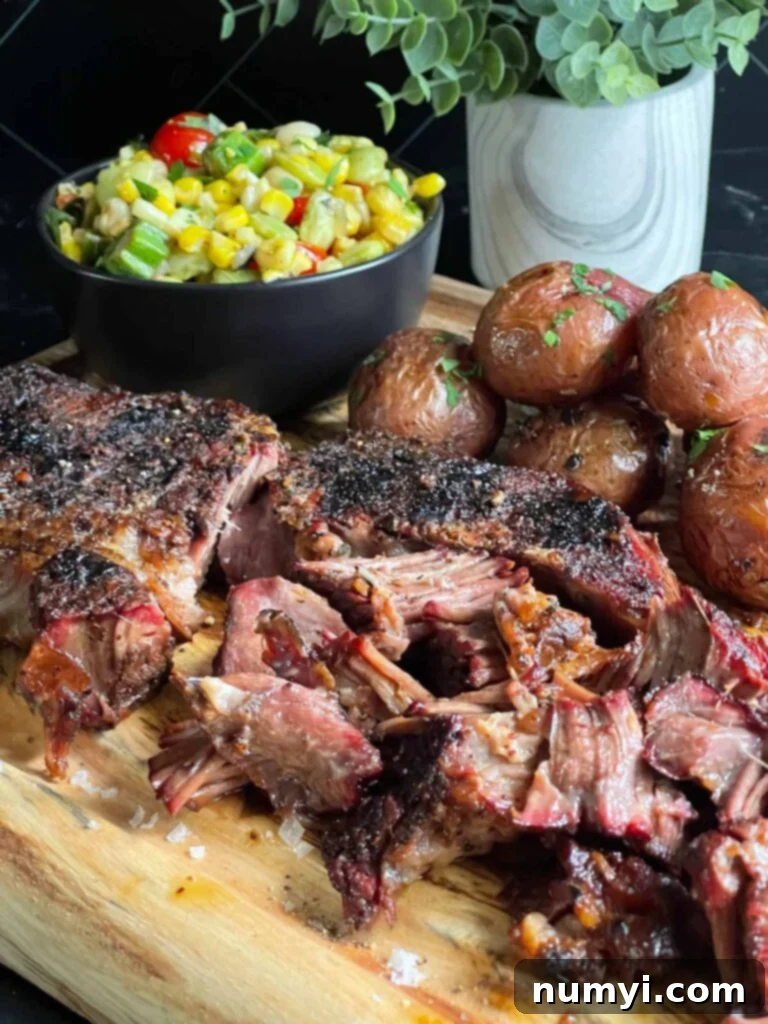
It’s truly amazing how much culinary enjoyment can come from a very affordable piece of beef. So, stop hesitating and give this incredible smoked chuck roast a whirl! You won’t regret it.
Tips and Variations for Your Smoked Chuck Roast
- Rub It Your Way: While I lean towards a purist view for beef (salt and pepper, or a simple Texas-style rub), there is absolutely nothing wrong with experimenting with your favorite rubs. Sweet and spicy rubs, or those with a heavier garlic or paprika base, can create exciting flavor profiles.
- Always Cook to Temperature, Not Time: This cannot be stressed enough. Cook times are estimates and can vary wildly based on your specific cut of meat, smoker efficiency, outside temperature, and even humidity. An accurate meat thermometer is your best friend.
- Experiment with Wood Types: Don’t be afraid to play around with different smoking woods. While hickory, pecan, and oak are excellent standard choices for beef, consider apple or cherry for a milder, fruitier smoke, or mesquite for a more intense, bolder flavor (use sparingly if new to it). This smoked chuck roast recipe is wonderfully adaptable to all sorts of wood combinations.
- Achieve the Perfect Bark: For a darker, crispier bark, ensure the chuck roast is thoroughly patted dry before applying the rub. You can also try a slightly higher initial smoking temperature (e.g., 275°F for the first hour) before dropping it back down.
- Probe Placement: When inserting your meat thermometer, aim for the thickest part of the roast, but ensure the probe is not touching any bone or large pockets of fat, as this can give an inaccurate reading.
- Consider a Water Pan: Especially in drier climates or with less humid smokers, a water pan can help maintain moisture in the cooking chamber, contributing to a juicier final product and potentially helping with smoke adhesion.
Frequently Asked Questions (FAQ) About Smoking Chuck Roast
For a typical 3 lb. chuck roast, expect a total smoking time of approximately 5-6 hours when maintaining a smoker temperature between 225-250 degrees Fahrenheit. This includes about 3 hours for the initial smoke, followed by 2-3 hours wrapped until tender, plus a crucial resting period.
Absolutely! Chuck roast is perfect for smoking. It’s a quick option for barbecue standards, incredibly flavorful, and cooks down to a desirable fall-apart tenderness. Its natural marbling and collagen content break down beautifully under low-and-slow heat, making it our preferred way to prepare this cut.
“Better” is subjective and often comes down to personal preference. However, smoked chuck roast often boasts more marbling and connective tissue than a lean brisket flat, which, when properly rendered, can yield an incredibly tender, unctuous bite of meat in a fraction of the time it takes to smoke a full brisket. It’s a fantastic alternative for those seeking similar qualities without the extensive cook time or higher cost.
Brining, particularly a dry brine (simply applying salt to the meat and letting it rest), is always a good idea for most meats, and chuck roast is no exception. A dry brine introduces salt to the meat’s proteins, helping them retain moisture during cooking and enhancing overall flavor. We prefer a dry brine over a wet brine for a better bark.
A smoked chuck roast is considered “done” and perfectly tender when it reaches an internal temperature of about 200-210°F. This range ensures that the tough connective tissues have fully broken down into gelatin, resulting in that desirable fall-apart texture.
Chuck roasts typically don’t require extensive trimming like a brisket. You might remove any large, excess pieces of hard fat on the exterior, but leave most of the marbling and smaller fat caps, as they will render down and contribute significantly to the moisture and flavor during the long smoke.
Other Amazing Barbeque (BBQ) Recipes You’ll Love
Pork Butt Burnt Ends Recipe
Double Bone-In Smoked Pork Chops
Smoked Turkey Breast Easy And Perfect
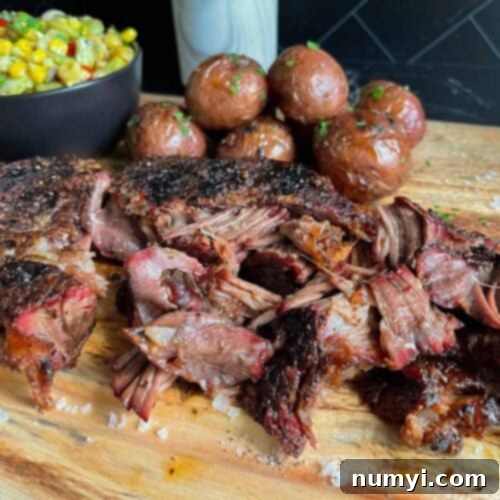
Smoked Chuck Roast Recipe
Print
Pin
Rate
Equipment
-
Smoker
Ingredients
- 3 lb Chuck Roast
- 2 tbsp Montreal Steak Seasoning or preferred rub
- 1 tbsp Worcestershire sauce optional
Instructions
-
Apply Worcestershire sauce over the chuck roast evenly, approximately 1 tablespoon.
-
Apply Montreal steak seasoning (or preferred rub) generously. Make sure to apply the rub to the sides of the roast as well.
-
Allow to rest for at least 1 hour before smoking.
-
Preheat the smoker to 250 degrees. Use your favorite wood. For us, and this cook, we use a mixture of hickory and cherry.
-
Place the chuck roast(s) onto the grill and close the smoker.
-
Smoke the chuck roast until the internal temperature reaches between 155 to 160 degrees Fahrenheit, approximately 3 hours.
-
Remove from the smoker. Place the meat onto a couple of large pieces of aluminum foil. Add a few tablespoons of butter and wrap the roasts tightly with the aluminum foil.
-
Place the chuck roast(s) back onto the smoker and continue to cook until the internal temperature hits about 205, approximately 2 hours.
-
Remove the chuck roast(s) from the smoker and allow to rest for at least an hour to ninety minutes.
-
Using your hands or some serving forks, break up the smoked chuck roast into the desired size of meat pieces and serve with your favorite sides.
Notes
If you have leftovers, allow the meat to come down to room temperature. Store in an air-tight container and refrigerate for up to three days.
Nutrition
